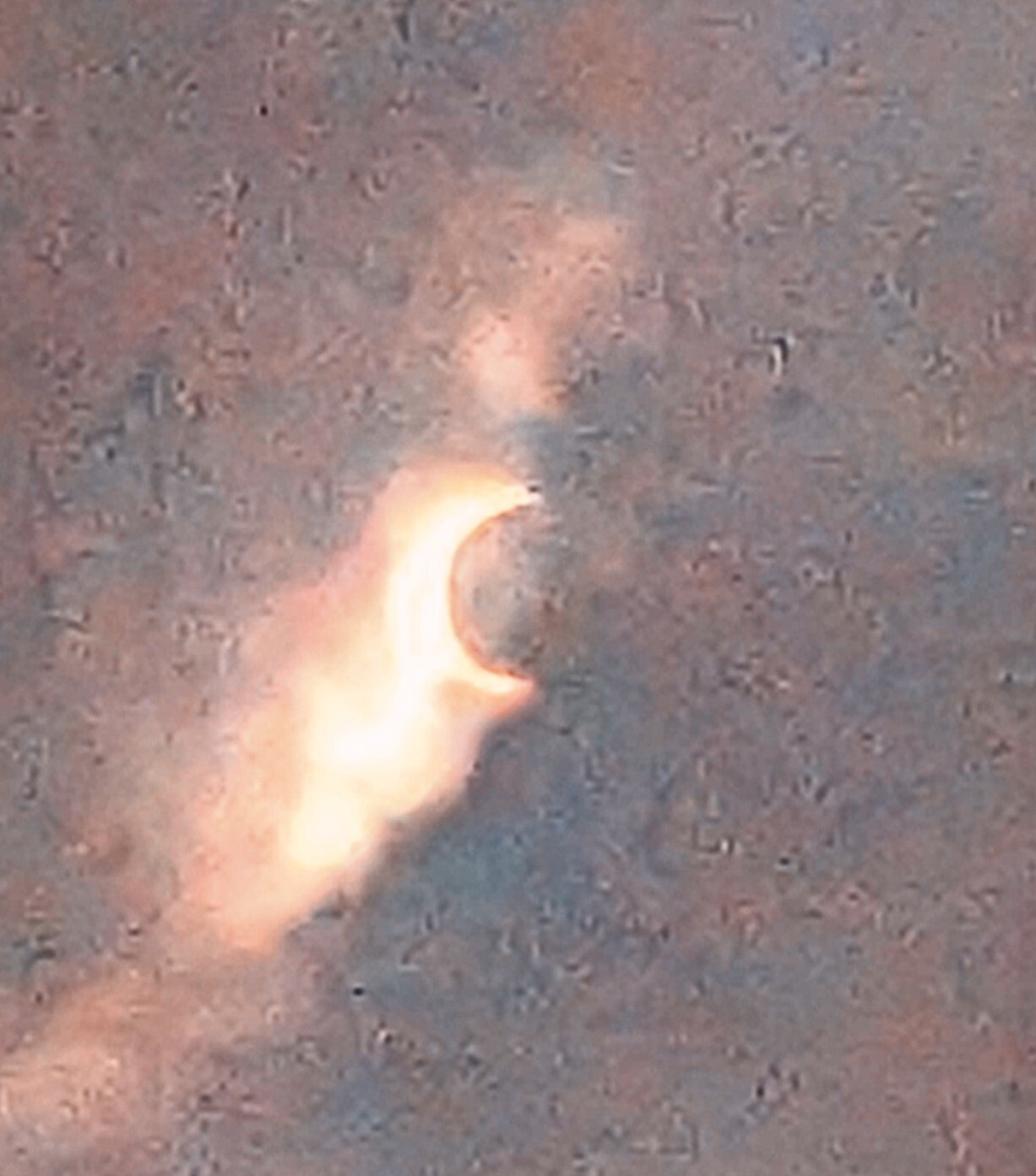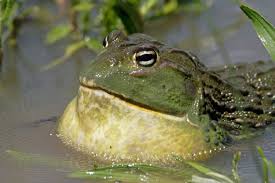- cross-posted to:
- earth@hexbear.net
- cross-posted to:
- earth@hexbear.net
The American bullfrog (Lithobates catesbeianus), often simply known as the bullfrog in Canada and the United States, is a large true frog native to eastern North America. It typically inhabits large permanent water bodies such as swamps, ponds, and lakes. Bullfrogs can also be found in manmade habitats such as pools, koi ponds, canals, ditches and culverts. They prefer warm, slow or stagnant waters with abundant vegetation, but are also found along the shorelines of lakes and banks of streams. The bullfrog gets its name from the sound the male makes during the breeding season, which sounds similar to a bull bellowing. The bullfrog is large and is commonly eaten throughout its range, especially in the southern United States where they are plentiful. The dorsal (upper) surface of the bullfrog has an olive-green basal color, either plain or with mottling and banding of grayish brown. The ventral (under) surface is off-white blotched with yellow or gray. Often, a marked contrast in color is seen between the green upper lip and the pale lower lip. The teeth are tiny and are useful only in grasping. The eyes are prominent with brown irises and horizontal, almond-shaped pupils. The tympana (eardrums) are easily seen just behind the eyes and the dorsolateral folds of skin enclose them. The limbs are blotched or banded with gray. The fore legs are short and sturdy and the hind legs long. The front toes are not webbed, but the back toes have webbing between the digits with the exception of the fourth toe, which is unwebbed. Bullfrogs are sexually dimorphic, with males being smaller than females and having yellow throats. Males have tympana larger than their eyes, whereas the tympana in females are about the same size as the eyes. Bullfrogs measure about 3.6 to 6 in (9 to 15 cm) in snout–to–vent length. They grow fast in the first eight months of life, typically increasing in weight from 5 to 175 g (0.18 to 6.17 oz), and large, mature individuals can weigh up to 500 g (1.1 lb). In some cases bullfrogs have been recorded as attaining 800 g (1.8 lb) and measuring up to 8 in (20 cm) from snout to vent. The American bullfrog is the largest species of true frog in North America. Bullfrogs are ambush predators and will eat almost any animal they can capture and swallow, including worms, insects, crayfish, fishes, other frogs, snakes, small turtles, small mammals and even birds. Animals such as snapping turtles, foxes, herons, and raccoons eat Bullfrogs. Most breeding takes place between April and August. The male grasps the female and externally fertilizes eggs produced by female as she deposits them in water. Clutch size can be up to 12,000 eggs. Females may produce up to three clutches per breeding season. Bullfrogs can live seven to 10 years.
🐸🐸🐸🐸🐸🐸🐸🐸🐸🐸🐸🐸🐸🐸🐸

I love frogs
They are so sweet 🥰🥰🥰
Looks so happy 🐸
Im sure they are
they all happy until i throw em in frying oil
😧😧😧
🐸🐸🐸🐸🐸🐸🐸🐸
I literally had this exact same picture on desktop lol🐸
💀💀💀
croak
Unfortunately they are an invasive species in Spain :(nvm I got confused







